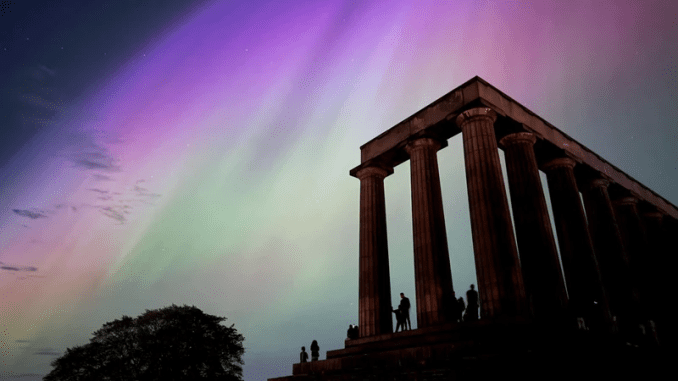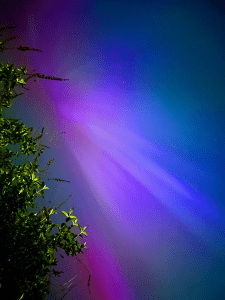
The strongest solar storm to hit Earth in over 20 years erupted on Friday, causing spectacular light displays from Tasmania to Britain.
The biggest solar storm to hit Earth in almost 20 years erupted on Friday, causing breathtaking astronomical light displays from Tasmania to Britain and possibly causing satellites and electricity networks to malfunction if it lasts into the weekend.
Just after 18:00 (SA time) the first of multiple coronal mass ejections (CMEs), or plasma and magnetic field expulsions from the Sun, occurred, according to the Space Weather Prediction Center of the National Oceanic and Atmospheric Administration (NOAA).
Pictures of Auroras are Being Posted on Social Media.
Later, it received an upgrade to “extreme” geomagnetic storm, the first since October 2003’s “Halloween Storms” destroyed South Africa’s power grid and resulted in blackouts in Sweden.
In the days ahead, more CMEs should hammer the earth.
Pics of auroras from Australasia and northern Europe were all over social media.
We just roused the children to go see the Northern Lights in the backyard! Very evident to the unaided eye, according to AFP interview with Iain Mansfield in Hertford, England.
The island state of Tasmania in Australia shared that sense of amazement.

The Tasmanian skies this morning around four in the morning were utterly biblical. Photographer Sean O’ Riordan said, “I knew I could not pass up this opportunity and I’m leaving today,” along with a picture on social media site X.
Governments alerted airlines, satellite providers, and the electrical system about possible disruptions brought on by variations in Earth’s magnetic field.
While solar flares travel at the speed of light and arrive at Earth in about eight minutes, CMEs move more slowly; the current average is 800 km/s, according to officials.
From a vast sunspot cluster 17 times bigger than our planet, the CMEs emerged. An 11-year cycle that brings more activity is coming to an end for the Sun.
Get Outside Tonight and Have a Look.
The ultimate strength of the storm would determine how much of an impact it would have across the planet’s northern and southern latitudes, according to University of Reading space physics professor Mathew Owens, who spoke with AFP.
I would suggest going outside tonight to have a look because the aurora is really amazing. Daytime sunspot clusters can also be seen by those wearing eclipse glasses.
Within the US, this might cover states like Alabama and Northern California, according to officials.
Brent Gordon of NOAA urged the general public to attempt using phone cameras to photograph the night sky even if they were unable to spot auroras with their unaided eyes.
“You would be amazed at what you see in a picture versus what you see with your eyes. Just go out your back door and take a picture with the newer cell phones.”
Pigeons and Spacecraft
Power lines among other long cables are subjected to currents from changing magnetic fields brought on by geomagnetic storms, which may result in blackouts. Engineering issues can also result from long pipelines becoming electrified.
High radiation dosages are another threat to spacecraft, albeit the atmosphere keeps this from getting to Earth.
Astronauts aboard the International Space Station can be asked to relocate to more insulated areas of the outpost by NASA’s specialised crew that monitors astronaut safety.
“Users of high-frequency radio signals may experience temporary degradation or complete loss of signal on much of the sunlit side of Earth,” the US Space Weather Prediction Center said after one very strong flare peak.
Affected could also include pigeons and other species with internal biological compasses. The Jet Propulsion Laboratory of NASA reports that caretakers of pigeons have observed fewer birds returning home during geomagnetic storms.
People should, according to officials, have the standard backup plans in place for power outages, such as having radios, batteries, and flashlights on hand.
September 1859 witnessed the Carrington Event, so named for British scientist Richard Carrington, the strongest geomagnetic storm in recorded history.
At that time, high currents on telegraph lines shocked technicians and even ignited parts of the equipment.
Leave a Reply